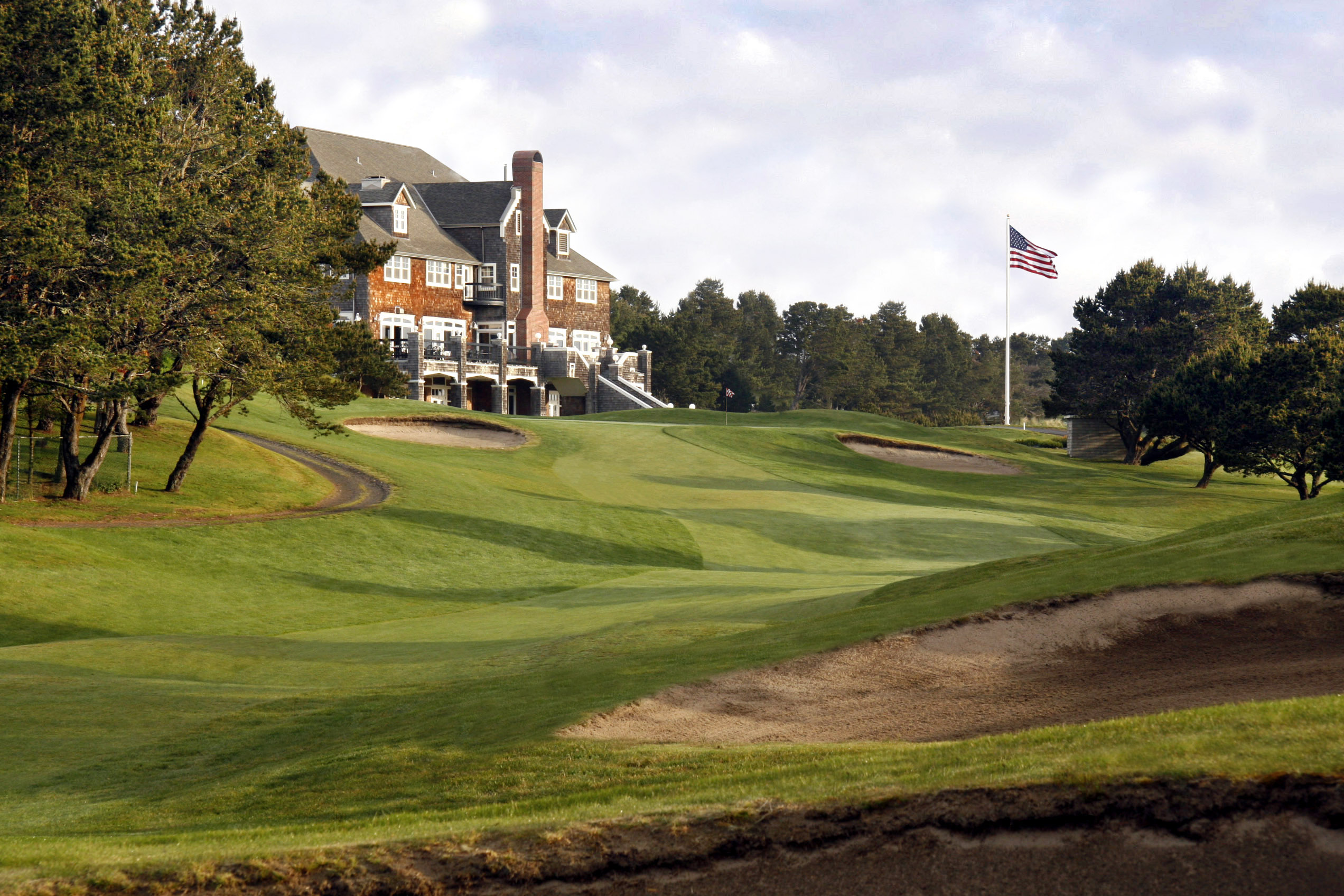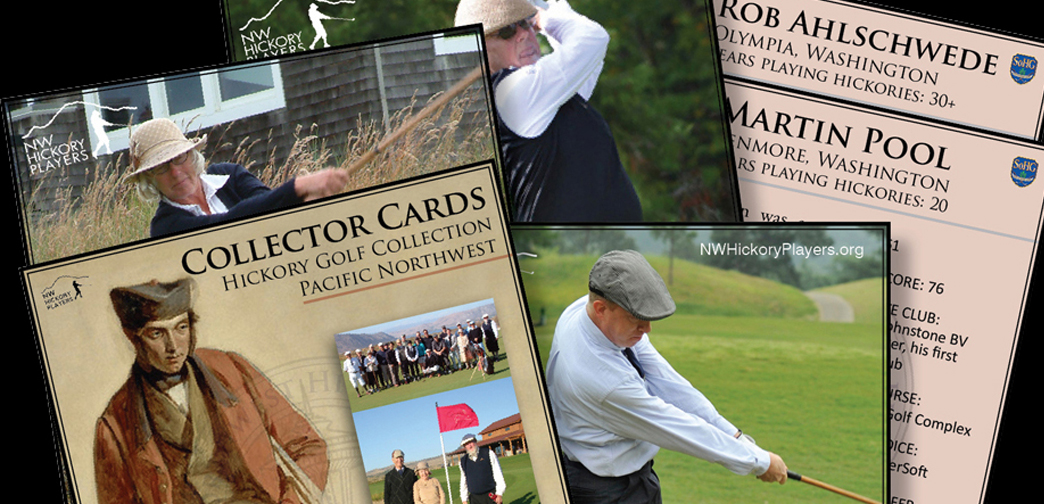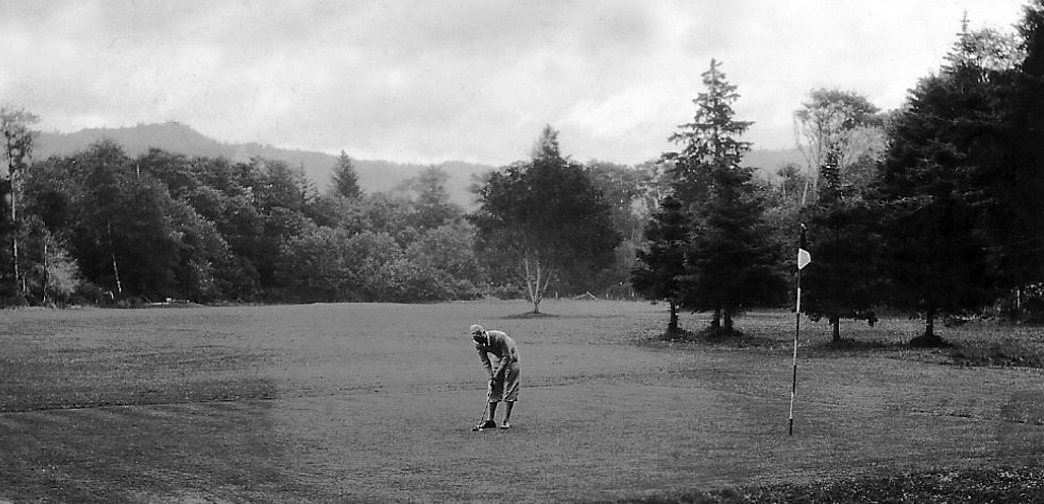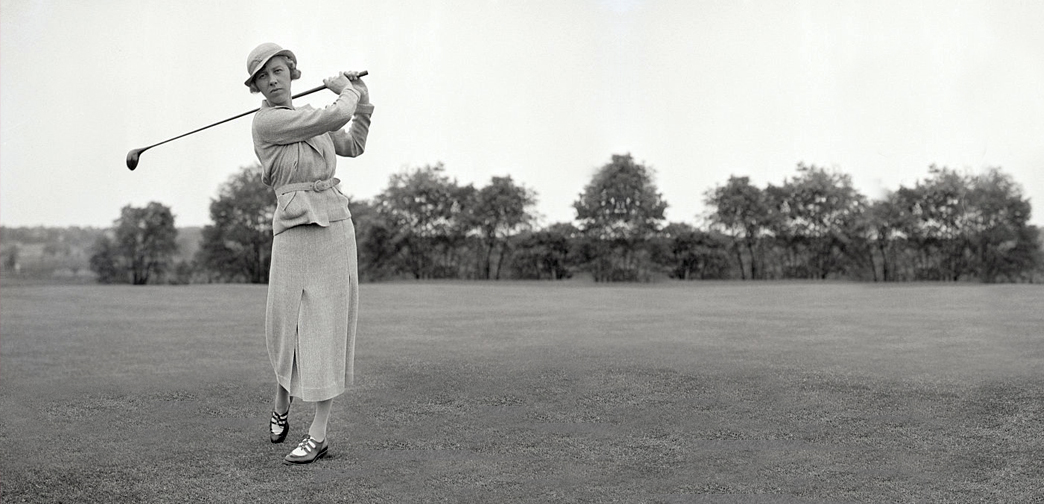“Handsome Johnny” Farrell
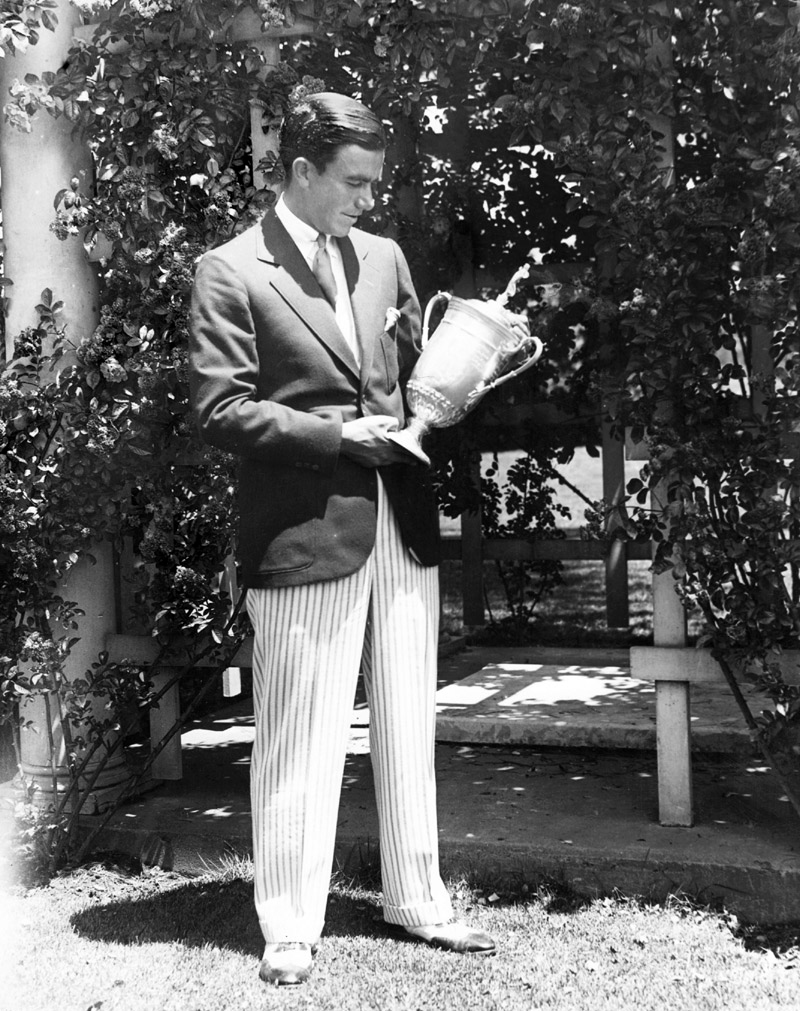
Craig Dolch, writing for the Palm Beach Post in June, 2003, noted the following about Johnny Farrell…
He was “Handsome Johnny” to the press, winning golf championships, dating Hollywood starlets and living the good life with the celebrities of his day. Dempsey. Ruth. Gershwin. Fairbanks.
Legendary names. But “Handsome Johnny” Farrell’s legacy didn’t last. He perhaps is the greatest golfer the game has forgotten. Until now.
2003 marked the 75th anniversary of Farrell’s victory in the 1928 U.S. Open, when he birdied the last two holes of a 36-hole playoff to beat Bobby Jones by a shot at Olympia Fields Country Club. The United States Golf Association, not known for its sentimentalism, honored Farrell by having different images of him on all tickets given to the 50,000 spectators who watched the 103rd national championship.
The belated tribute can be traced to Palm Beach County, where Farrell spent parts of his last 31 years as a Boynton Beach resident. His granddaughter, Mary Kay McGuire-Willson, a Lake Worth-based marketing and public relations specialist, spent the past few years trying to make sure Farrell received his proper recognition.
“It’s like someone took an eraser to my grandfather’s career, and it’s very frustrating for us,” McGuire-Willson said. “The reason people forgot him was he was not a self-serving gentleman. He was a very humble man.”
McGuire-Willson lobbied the USGA to honor her grandfather at the 2003 Open. More than 20 Farrell family members joined the celebration as guests of the USGA.
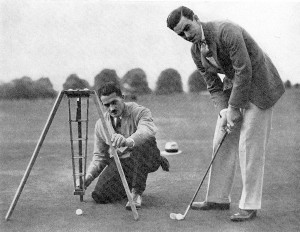 “The main thing I want to do is see all the thousands of people with his pictures on the tickets,” said one of Farrell’s two daughters, Peggy McGuire, who still lives in her parents’ home in Boynton Beach. “That’s why I’m going. Maybe now my father will get the type of recognition he deserves.”
“The main thing I want to do is see all the thousands of people with his pictures on the tickets,” said one of Farrell’s two daughters, Peggy McGuire, who still lives in her parents’ home in Boynton Beach. “That’s why I’m going. Maybe now my father will get the type of recognition he deserves.”
Farrell, a longtime teacher at the Country Club of Florida in Boynton Beach, died in 1988 at 87. His remarkable playing career was followed by 50 years of teaching the game to everyone from weekend hackers to actors, athletes, a dictator and five U.S. presidents.
Despite his many accomplishments, Farrell’s family believes Johnny’s victory total was shortchanged by the PGA Tour. He played only 11 full seasons on the Tour (1922-32) but is credited with 22 wins to rank 25th on the all-time victories list despite retiring in his early 30s to become the club professional at Baltusrol. Farrell’s family claims he won at least 10 more events that aren’t recognized by the PGA.
Farrell also played on three Ryder Cup teams and was runner-up in the British Open and the PGA Championship in 1929. He also was third in two other U.S. Opens (1925 and ’26). That earned his induction into the PGA Hall of Fame in 1953, but he’s not in the World Golf Hall of Fame.
Farrell had a spectacular run leading up to his U.S. Open victory. Stories by acclaimed sportswriters such as Grantland Rice and O.B. Keeler said Farrell won eight consecutive tournaments in 1927, but the Tour only credits him with five on Farrell’s year-by-year tournament summary. The discrepancy is because the Tour doesn’t consider all of those eight tournaments as official events. But when the Tour lists all the players who won four or more consecutive events in the back of its media guide, Farrell’s name is nowhere to be found.
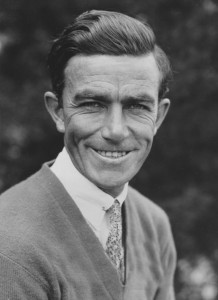
So McGuire-Willson’s crusade isn’t over; she got the USGA’s attention, but she’s still trying to persuade the PGA to correct inconsistencies in her grandfather’s record. To that end, she has a powerful ally in Byron Nelson, who holds the Tour record with 11 consecutive wins in the early 1940s.
“I broke his record then, for sure,” Nelson said by phone. “But you’ve got to remember, back then the Tour would make all sorts of changes with dates and things like that. I won 66 tournaments, but I’m only credited with 52.”
Nobody can dispute Farrell’s performance at Olympia Fields. Jones already had won two U.S. Opens and unquestionably was the dominant figure in the game. Farrell had come close in ’25 and ’26, but had yet to win that elusive first major. But he got another chance when his final-round 71 pulled him into a tie with Jones.
“Nobody could beat Bobby Jones back then,” said one of Farrell’s three sons, Billy, a longtime club professional at Stanwich (Conn.) Club who also played occasionally on the Tour. “I’m convinced one of the reasons the USGA went to a 36-hole playoff was they didn’t think Bobby would lose.”
There were six lead changes during the playoff, which was watched by a gallery of more than 7,000. Farrell had taken a three-shot lead to close the first 18, only to watch Jones forge into a tie, two holes into the afternoon round. Farrell regained a two-shot lead on the next hole, only to watch Jones charge back again. Farrell once again took a two-shot lead at the turn, but Jones picked up a stroke on each of the next three holes to take the lead with six holes left.
Jones appeared poised to pull away when he hit his tee shot at the par-3 13th to within 10 feet. But Farrell hit his approach to 2 feet and pulled back into a tie when he made his short birdie putt and Jones missed.
“That was the shot that won the tournament for me,” Farrell told reporters. “If Bobby had taken a two-shot lead, it would have been over.”
The match stayed even until the 16th hole, when Jones missed a par putt to fall one back. But Jones applied the pressure to Farrell with a birdie on the 17th that Farrell matched, then Jones had a gimme birdie at the final hole that forced Farrell to hole his 8-footer for birdie to avoid playing a 109th hole. Just as Farrell was about to putt, he was distracted by the noise of the cameras around the 18th green.
“What did I think when the cameras started clicking as I took my stance?” Farrell said. “Why, I just said to myself, ‘You’ve got to make this one. Just loosen up on your grip and put it in.’ And that’s what I did.”
The crowd erupted and Farrell’s closest friend, Gene Sarazen, and four other players carried Farrell off the green on their shoulders. It was a fitting end to a playoff in which the two players had combined for 16 birdies despite the typically brutal U.S. Open setup. Sportswriters such as Rice spared no hype to describe the championship.
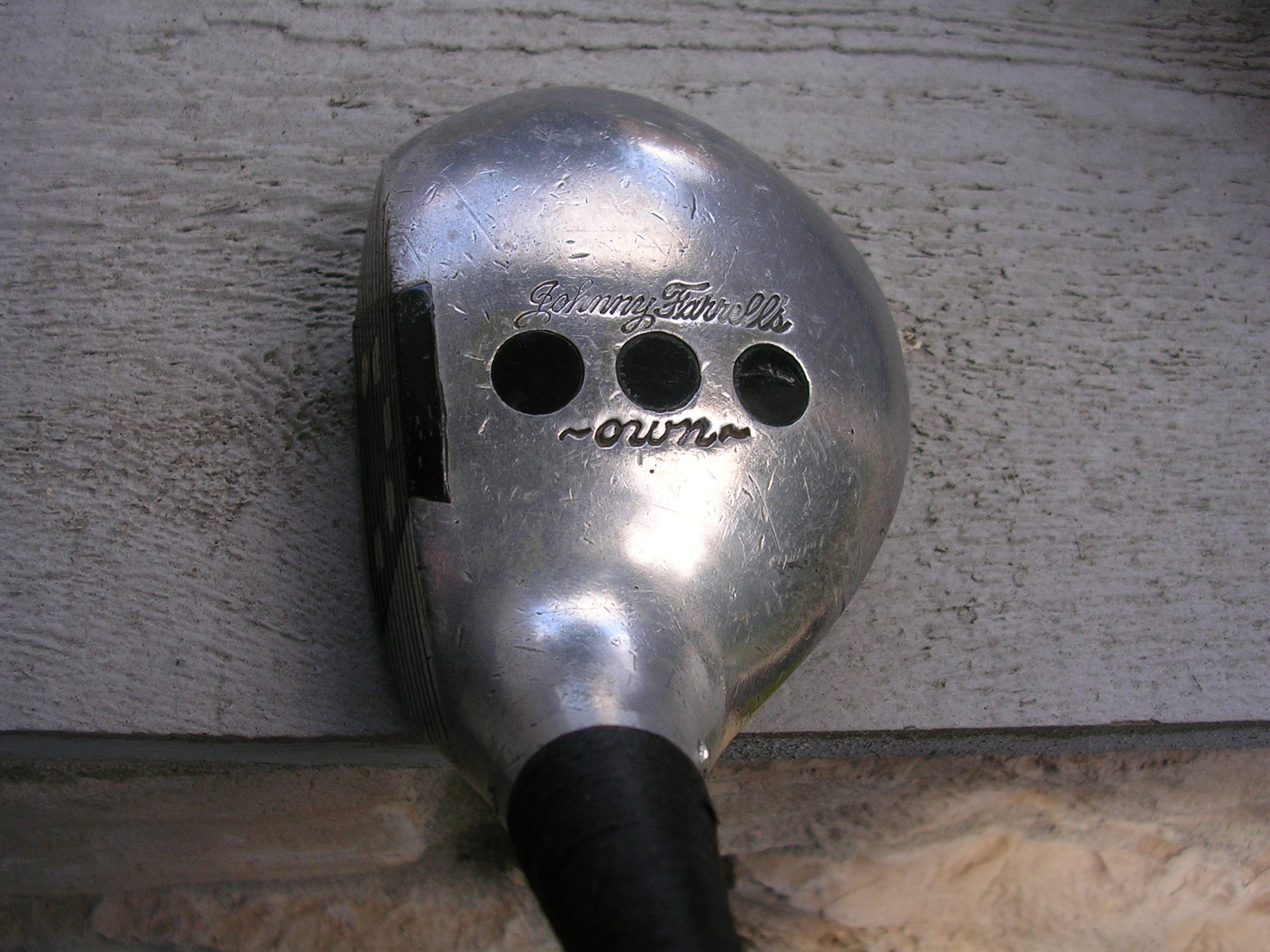 “There never has been another golf competition,” Rice wrote, “where the drama held its place so long and tide of battle swung back and forth with such startling rapidity. I have never seen two golfers so physically and mentally weary and worn down after the strain of the championship, play such stout-hearted golf against all the handicaps that golf brings.”
“There never has been another golf competition,” Rice wrote, “where the drama held its place so long and tide of battle swung back and forth with such startling rapidity. I have never seen two golfers so physically and mentally weary and worn down after the strain of the championship, play such stout-hearted golf against all the handicaps that golf brings.”
Farrell’s prize was $500. He made another $69,000 in endorsements as a result of the U.S. Open victory, but he could have earned a lot more if he wanted to.
“They had to chase my grandfather to do any endorsements,” McGuire-Willson said. “He didn’t play golf to become rich or famous. He played it because he truly loved the game.”
Nelson, then 91 in 2003, was one of the few remaining golfers who played with Farrell. What Nelson remembers besides Farrell’s skills was the way he acted and the way he dressed.
“He was very, very much of a gentleman, a super nice guy,” Nelson said. “He dressed like nobody did in those days. He and his wife were considered the best-dressed couple on Tour. He also had a nice, fluid swing. He was a pretty player to watch.”
“Handsome Johnny” was stylish and upbeat. At one point, he dated Fay Wray, the actress King Kong carried to the top of the Empire State Building. But his looks might have hurt his career because, two years after his U.S. Open win, they helped him meet a young actress named Catherine Hush, and suddenly traveling the Tour didn’t seem like so much fun.
Farrell was playing in an exhibition at Innis Arden Golf Club in Old Greenwich, Conn., when he first saw his future bride, a well-to-do 19-year-old who was selling programs at the charity event.
“My father apparently hit his shot into the gallery on purpose so he could get his ball near her and talk to her,” said Farrell’s other daughter, Cathy Farrell Rock. “What he didn’t know is my mom already had spotted my dad on the golf course and she wanted to meet him, too.”
They married the next year, then starred together in a six-film package called How To Play Golf – Farrell as the instructor and “Kay,” as she was known to her friends, as his pupil. They socialized with Jack Dempsey, George Gershwin, Douglas Fairbanks and Babe Ruth, who gave Kay a jade necklace for her 21st birthday.
Farrell was so smitten he lost some of his enthusiasm for the game. He won just once during the 1931 and ’32 seasons, admitting he’d rather be home with Kay than driving around the country hitting golf balls.
Farrell finally decided to stop playing on Tour and took the job at Baltusrol in 1934, leaving during the winter to stay in Florida beginning in 1956. Farrell spent the next 50 years teaching others how to play the game. His list of pupils included the Duke of Windsor, Italian dictator Benito Mussolini and five presidents. He also spent time on the links with Joe DiMaggio, Bob Hope, Bing Crosby and Ruth.
“We were exposed to some very interesting people growing up,” Peggy McGuire said. “You never knew who was going to call up on the phone and ask my dad for a lesson. But he never bragged about knowing all these famous people. He just wanted to help them play golf.”
Farrell also taught the game to his five children (Johnny, Billy, Peggy, Jimmy and Cathy), all of whom enjoyed some success in the sport. In 1967, the Farrells were named the Golfing Family of the Year by the Metropolitan Golf Writers’ Association.
Farrell was not among the players who were transferred from the cash-strapped PGA Hall of Fame into the World Golf Hall of Fame when the two merged in 1983. Farrell wasn’t alone; Lake Worth’s Doug Ford also is among the 20 players who either didn’t get transferred or haven’t been inducted since.
“He never got mad about it, but I think it made him sad,” Peggy McGuire said. “He didn’t understand why. The only reason I can think of is he wasn’t a self-promoter.”
That’s another reason why Farrell’s children and their families are looking forward to this week. They’re hoping the 75th anniversary of his U.S. Open victory will provide the spark to get him into the Hall of Fame through the veteran’s ballot. Again, Nelson could prove to be a valuable supporter.
“He deserves to be in the Hall of Fame.” Nelson said.
Farrell has plenty of other influential friends. That was obvious during a ceremony to honor him at the 1980 U.S. Open at Baltusrol, when stars such as Jack Nicklaus, Arnold Palmer and Gary Player skipped a Rolex party – missing out on a watch and an appearance fee – to attend Farrell’s get-together.
“He was one of the great gentlemen of golf,” Player said. “A great family man, good teacher, just one of the nicest men I ever met.”
At that ceremony, Farrell gave a short speech, talking about what he had accomplished in the game. He noted how he had won more than 30 tournaments against the game’s top players.
“If I had won that many today, I would be flying my own jet,” Farrell said. “I was born a little too soon.”
Farrell’s career
* Won the 1928 U.S. Open at Olympia Fields, beating Bobby Jones by a shot in a 36-hole playoff.
* Won eight consecutive tournaments in 1927 (the PGA Tour only recognizes five of those wins, however).
* Named Player of the Year in 1927 and 1928.
* Is tied for 25th on the PGA Tour’s all-time wins list with 22 victories (Farrell won at least 10 more tournaments the Tour won’t recognize). Also was runner-up 24 times.
* Three-time member of the U.S. Ryder Cup teams, compiling a 3-2-1 record.
* Elected to the PGA Hall of Fame in 1953 (but wasn’t transferred to the World Golf Hall of Fame).
* Runner-up in 1929 British Open at Carnoustie and the 1929 PGA Championship at Hillcrest Country Club in Los Angeles and was third in 1925 U.S. Open at Worcester (Mass.) Country Club and 1926 U.S. Open at Scioto Country Club in Columbus, Ohio.

Bob Weisgerber wrote about the famed match in his article, Golf’s Great Heritage: Olympia Fields–The 1928 U.S. Open
“The 1928 U.S. Open proved to be an upset of grand proportions. Coming in, Bobby Jones was a name to reckon with and most everyone thought he would take the trophy. Instead, Johnny Farrell, a club pro who had competed on tour, emerged the victor. It was a hard fought battle from start to finish.
At the end of regulation the two were tied at 294 for 72 holes. They played a 36 hole playoff. And they played it well, Farrell taking 143 shots (70-73) and Jones 144 (73-71). Interestingly, if the match had been played at match play, Jones would have won by one-up!
News reports of the day called the competition “thrilling.” It described Farrell as having “bulldog courage and a lion heart.” Of course, the same could be said of Bobby Jones, who, unlike Farrell, was not playing for prize money but for the honor of victory. The difference in the scores might have been the last four holes in the morning round, where Farrell got hot, really hot, and birdied all four of them!
Or it might have been the ninth hole, which seemed to jinx Jones. At least that’s the way it looked because on this par-four hole, Jones took fives and sixes on every one of the six rounds! Astonishing!
Here’s the way the play on the final playoff hole, the 18th, was reported by golf writer E. M. Adams in a publication called The Voice of the Golfer. Bobby Jones was one down at the time. Of course, there was no television, so this was a “word picture.”
“Now picture this scene. A 490-yard hole slightly dog leg, the tee on a hill, well back among some large trees that hug the line of play on the left. Two large traps, one on the right, one on the left 235 and 250 yards from the tee, guard the tee shot area. A ditch crosses the fairway 365 yards out and from which the ground rises gradually to the green set back among large trees.
Five thousand people were banked behind the green and lined down each side of the fairway. It had started to rain pretty hard as Johnny took up his stance to drive on that last hole. The sky was getting blacker every minute to the north and it would only be a matter of minutes before a deluge would break loose. The crowd was restless, many in the gallery had faithfully followed each shot and were envisioning another 36 hole playoff the following day. Johnny had been smiling at the seventeenth hole but when he walked out on the eighteenth tee, grim determination had replaced that grin. He drove to the rough at the right near a trap and his second shot was short in the rough on the left. Bobby had a beautiful shot off the tee, down the center. He purposely pulled his spoon shot to the green but the ball hit a spectator off the green to the left.
Farrell played a great pitch from the rough that was dead on the pin and the ball stopped seven feet short of the hole. Jones’ ball had been kicked by a policeman after it had come to rest, and the U.S.G.A. permitted him to replace it. Bobby carefully sighted the line to the hole and chipped to within two feet of the cup. The gallery gasped and cheered. Bobby had made his last big effort to keep the match going and Johnny had to sink that putt to win and save another playoff.
Farrell then showed that he, too, had the grit and courage that makes great men and champions. He walked up to his ball carefully studying the green, crouched down to sight the line and as he prepared to make his putt, a number of cameras broke the deathlike stillness that surrounded the green. Johnny stepped back from his ball, and requested the referee to please ask the cameramen to refrain from taking photographs until after the shot had been made. The referee spoke to the photographers, Johnny walked back to his ball, took up his stance, and without hesitating tapped it. Ten thousand eyes watched the ball roll straight toward the cup–it seemed a long time getting there–it finally disappeared from sight and the cheering that arose from the gallery paid just and due honor to one of the greatest, finest boys who has ever won the National Open championship.”
Ironically, during the first 36 holes of the championship the USGA had paired Farrell and Jones along with Walter Hagen and a man named Maurice McCarthy from New York. Jones opened with a 73, three back, while Farrell had a 77. After two rounds Bobby Jones led the field with a 144. Farrell had a 151. Few would then have backed Farrell in a bet to win.
But that’s golf. No different today than it was in 1928.”
